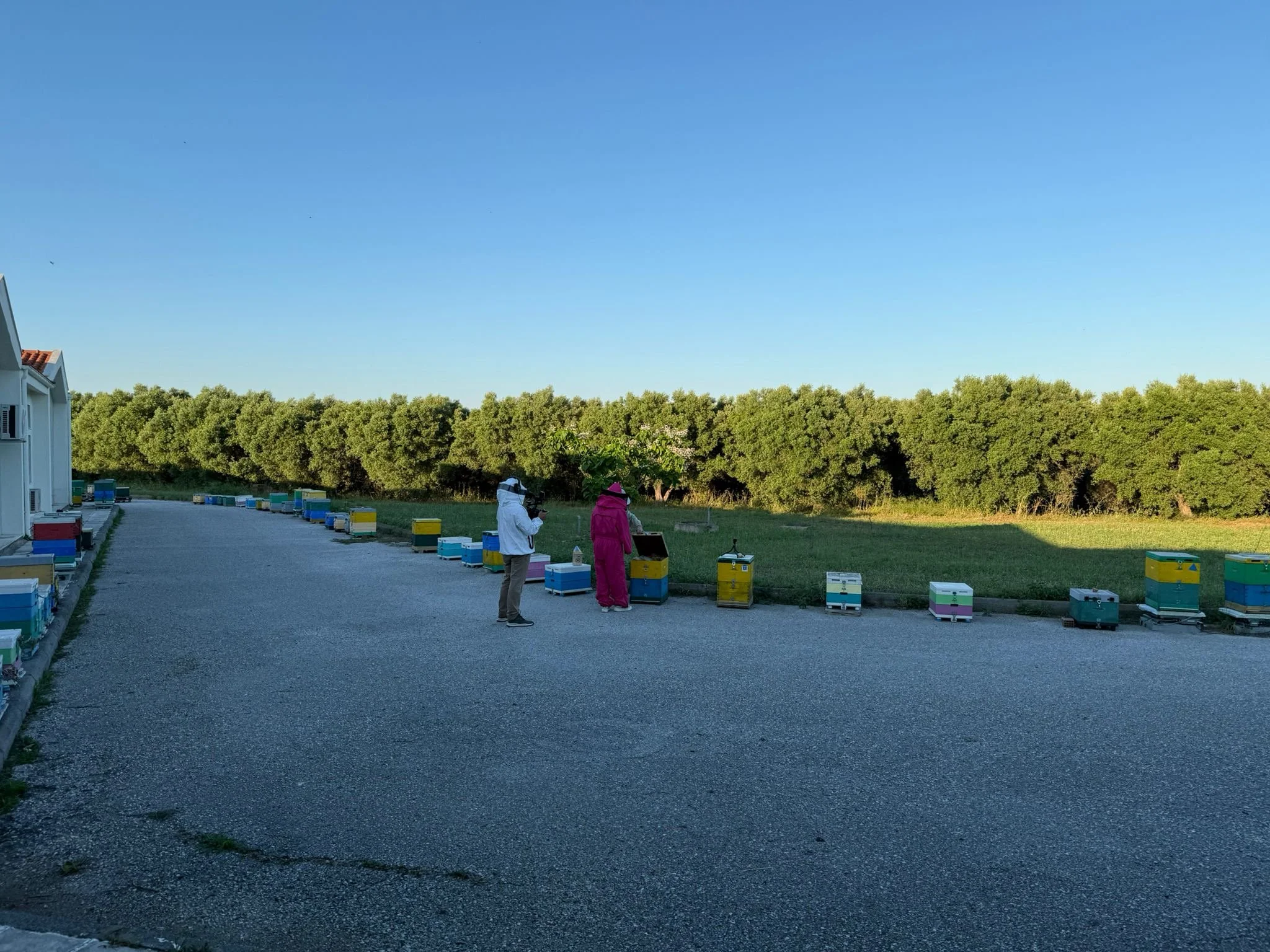ETAIN at Apimondia 2025: Exploring the Impacts of RF-EMF on Insects and Pollinators
Insects play a vital role in maintaining ecosystem health. When we think of bees and pollinators we also need to understand their role in food security. Yet, new technologies such as 3G, 4G and 5G raise important questions about their potential effects on biodiversity. How can the connectivity to these technologies have an effect on insects, and how can this affect the Planet?
Insects are increasingly exposed to Radio-Frequency Electromagnetic Fields (RF-EMFs) emitted by telecom antennas. With the ongoing expansion of telecom networks, pollinators such as bees face peak exposures when flying close to powerful antennas. Their small body size is considered one of the main reasons for this heightened exposure, as studies suggest that the smaller the organism, the greater its absorption of RF-EMFs. Insects also serve as biological indicators, they are highly sensitive to even subtle environmental changes, show remarkable diversity across ecosystems, and have relatively short lifespans.
While RF-EMFs are known to have biological effects in insects, their overall impact remains unclear. This is precisely the research space where the ETAIN project steps in, bringing a planetary health perspective to assess the links between RF-EMF exposure, insect biodiversity, and broader ecosystem well-being.
Beyond pollinators, RF-EMF effects on insects also indirectly affects human health and the economy. ETAIN’s research is expected to generate scientific evidence on the broader impacts of RF-EMF exposure on ecosystems and planetary health, contributing directly to policies and regulatory frameworks.
From 23–27 September 2025, ETAIN took part in the 49th Apimondia Conference, the world’s largest beekeeping event. Apimondia gathers beekeepers, scientists, honey traders, manufacturers, and policymakers to exchange knowledge, showcase new practices, and discuss scientific advances shaping the future of apiculture. This year’s conference, which welcomed over 8,200 participants, a new world record, offered ETAIN a unique opportunity to present its work and contribute to global discussions on pollinator health.
Three scientific posters presented by ETAIN
ETAIN presented the different angles of the project’s research through three posters, each one focusing on a diverse experiment:
Impact of indoor exposure to honey bee colonies: ETAIN experts have been carrying out brood development under RF-EMF exposure at Nea Moudania, Greece., assessing the impact of honeybee development when exposed to 3.6 GHz. Results showed high variability across generations and experiments in terms of brood removal, delayed hatching, and emergence rates. However, no significant overall differences were observed when pooling the data, a finding consistent with patterns seen in other insects such as drosophila. Researchers noted that daily disturbance of colonies during measurements may also influence outcomes. The study will continue with individual monitoring of honey bee brood cells under 24–26 GHz exposure.
Impact on wild bees under 5G RF-EMF exposure (field study in Cyprus): This study, one of the first field studies worldwide to test potential impacts of 5G on insects, investigates the effects of commercial 5G RF-EMF (3.4 GHz) on wild bees (Apoidea), a group of pollinators essential for ecosystem health. Researchers are using open-air artificial wild bee nests, some shielded and others unshielded from RF-EMF exposure, to measure possible effects on development of wild bees as well as their nesting ability. Although results are still preliminary, the study aims to collect robust data on changes in network topology and power. Together, these insights will help assess potential risks of RF-EMFs for both wild bees.
Impact on insect biodiversity and fitness under RF-EMF exposure: Another strand of research carried out in Nea Moudania (Greece) explored the potential impacts of RF-EMFs on biodiversity and insect fitness. The aim is not only to identify biological effects but also to provide policy recommendations for the sustainable management of honeybee and wild bee populations.
In addition to posters, ETAIN study was a subject of discussions in roundtables such as: World Café for Resilient Beekeeping, Veterinary Science: Bee Health, Welfare & Public Health 2025, Data Standardisation. These sessions provided valuable opportunities to exchange opinions with other experts, strengthen networks, and situate ETAIN’s findings within broader debates on pollutants and stressors affecting pollinators.
Apimondia 2025 was an exceptional stage to present ETAIN’s work, raise awareness on the links between RF-EMF and planetary health, and engage both professionals and citizens in the conversation. With further experiments underway, the project will continue advancing scientific knowledge to support healthier ecosystems, sustainable beekeeping, and informed policy decisions.




